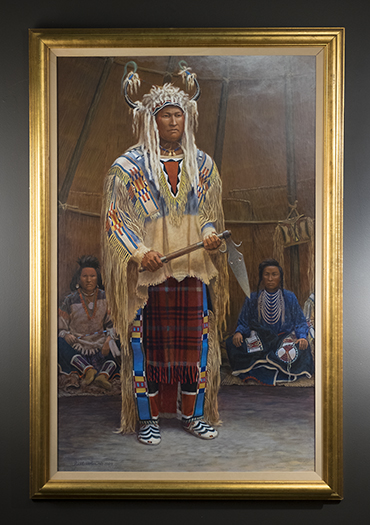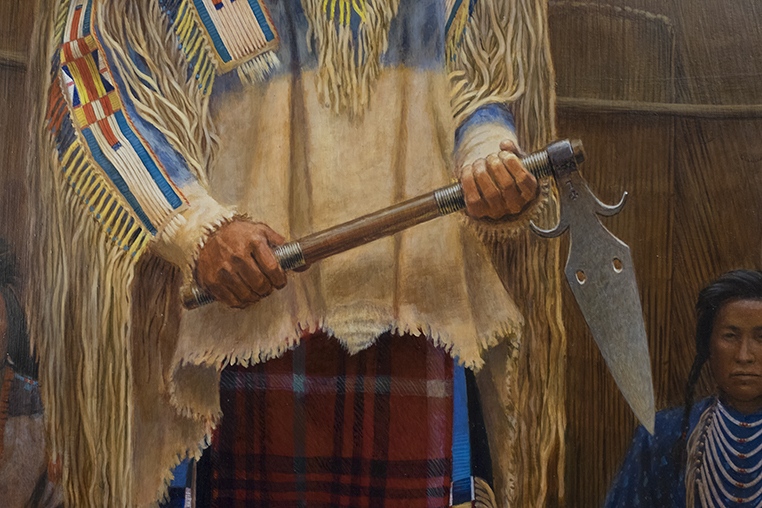Spontoon Tomahawk – 1989
In an Eastern Plateau tule-mat longhouse, a prominent man speaks in council about the accomplishments of his grandfather, whose old-time spontoon tomahawk he carries. Although the tomahawk is a trade piece from the beginning of the nineteenth century, the setting here is about 1870. The speaker wears an ermine-trimmed bonnet with wooden, tack-studded horns. His fringed shirt is of an early style, with shoulder and sleeve strips of quill-wrapped horsehair. Panel leggings with beaded strips in the trans-montane style, pony-beaded moccasins, and a plaid woolen breechclout complete his dress. The listeners, seated on tule mats and robes, are dressed in Plateau style of the latter part of the century.
This spontoon tomahawk is based on one in the Burke Museum of Natural History and Culture, collected near the Dalles on the Columbia River. Lewis and Clark described and illustrated tomahawks of this kind, which the expedition blacksmith made in large numbers for the Indians who visited the explorers’ winter camp at Fort Mandan on the Missouri River. The tomahawks were in great demand, and their trade was an important source of corn for the expedition members. The journals speak disparagingly of the battle axes: “The length of the blade compared with the shortness of the handle render it a weapon of very little strength, particularly as it is always used on horseback: there is still however another form which is even worse, the same sort of handle being fixed to a blade resembling an espontoon.”
Sun Dogs and Eagle Down: The Indian Paintings of Bill Holm by Steven C. Brown, with a chronology and bibliography by Lloyd J. Averill and with captions by Bill Holm; p.108



